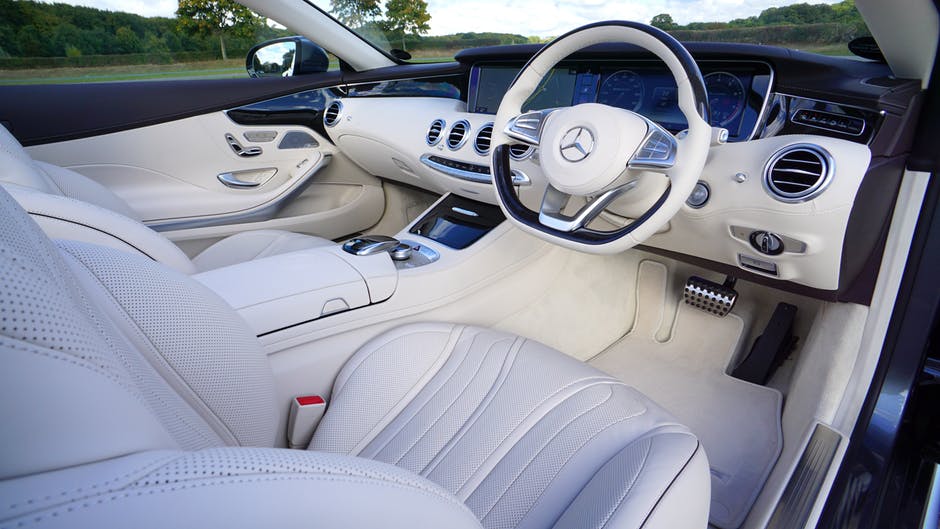Adjusting to your Priory vehicle
Whenever you leave the familiar driving seat of your own car and prepare to drive something different, it’s totally natural to feel a little awkward until you get used to it. Taking a few minutes to make yourself comfortable and identifying where everything is before you set off can pay dividends and provide you with a more relaxed driving experience in your newly hired Priory vehicle.
Get comfortable
First and foremost, you’ll need to make the necessary adjustments to make sure you’re comfortable and in easy reach of all the controls. Driver seats at the very least can be moved forwards and backwards and seat backs set to sit up or recline as comfort dictates. In many vehicles, seat height, seat angle and lumbar support are amongst the additional adjustment options available. Depending on the vehicle, you may also be able to adjust the steering wheel for height and reach.
Check your mirrors
Once you’re comfortable, check that you have good visibility through all your mirrors and make use of the available controls if any of them need to be adjusted.
Check the location of key controls
While it’s useful to know how to work the stereo and choose your station before you set off, you should definitely make sure you know where the hazard warning switch is located in case you need to slow down suddenly on a motorway and warn the traffic behind you. Additionally, take a moment to check if the indicators and windscreen wiper levers are on the same side of the steering wheel you’re used to in order to reduce embarrassment when indicating!
It’s also worth checking you know where reverse gear is, especially in a manual vehicle. While most of the time the position of the gears are clearly marked on the gearstick, the reverse gear isn’t always in the same place from one car to another. Additionally, in some cars, there’s an additional safety control on the gear stick to prevent reverse being accidentally selected. It might be a button to be pushed, or lever to be depressed or similar.
Keep size in mind
If you’re transitioning to a larger car, or even a van or minibus, you’ll need to keep the additional size and weight of your Priory vehicle in mind while you’re driving. We only keep the most modern vehicles in our fleet, but even the latest technology can only do so much to counter physics. Larger vehicles are heavier vehicles and will, therefore, take longer to stop, so leave additional distance between you and the vehicle in front.
Also bear in mind that vans and minibuses are high-sided vehicles and will, therefore, be more affected by crosswinds on exposed routes than you’d be used to in your car – forewarned is forearmed. Don’t forget to give yourself a larger turning circle for longer vehicles.
Some of our vans, the Luton Box vans, in particular, are much taller than the ceiling in the cab. Make sure you’re aware of the height of the vehicle (this will be displayed in the cab) and keep an eye out for low bridge signs which will display height restrictions.
Refuelling
It goes without saying that you should be very sure which type of fuel you need for your Priory vehicle. It also pays to make sure you’ve identified on which side of the vehicle the filler cap is located and how you get to it (there might be a key, there might be a control to release the filler flap etc).
One useful tip; if you’re having a brain freeze when approaching a filling station, look at the fuel light or fuel gauge on your dashboard. Most vehicles will have a little arrow or chevron on one side of the fuel indicator pointing to the side the filler cap is on. Your own car is likely to have this too – had you noticed this before we mentioned it?
Preparing for the differences
While the basic controls for most vehicles will be the same, the driving experience won’t ‘feel’ the same as your regular car. Take the first few miles a little more gently than you usually do while you adjust.
The biting point of the clutch (in manual vehicles) is likely to be different, so lift the pedal gently until you become used to finding it and balancing this with the accelerator. This way you’re less likely to jolt or stall.
If you’re used to a petrol and are hiring a diesel (or vice versa) bear in mind that the power delivery feels different. Diesels typically don’t rev as freely as petrol engines, but don’t need all those rpm’s either. So a petrol driver hiring a diesel might think a diesel is slow to respond until acclimatising, in the same way that a diesel driver might stall a petrol car by not revving enough before lifting the clutch. Either way, you’ll naturally adjust very quickly.
Enjoy your journey
Once you’ve taken a few minutes to familiarise yourself with your newly hired Priory vehicle, you’ll be able to take to the road with confidence and enjoy your journey in safety and comfort.
If you have any questions or concerns about adjusting to an unfamiliar vehicle, please don’t hesitate to get in touch, we’d be delighted to hear from you

